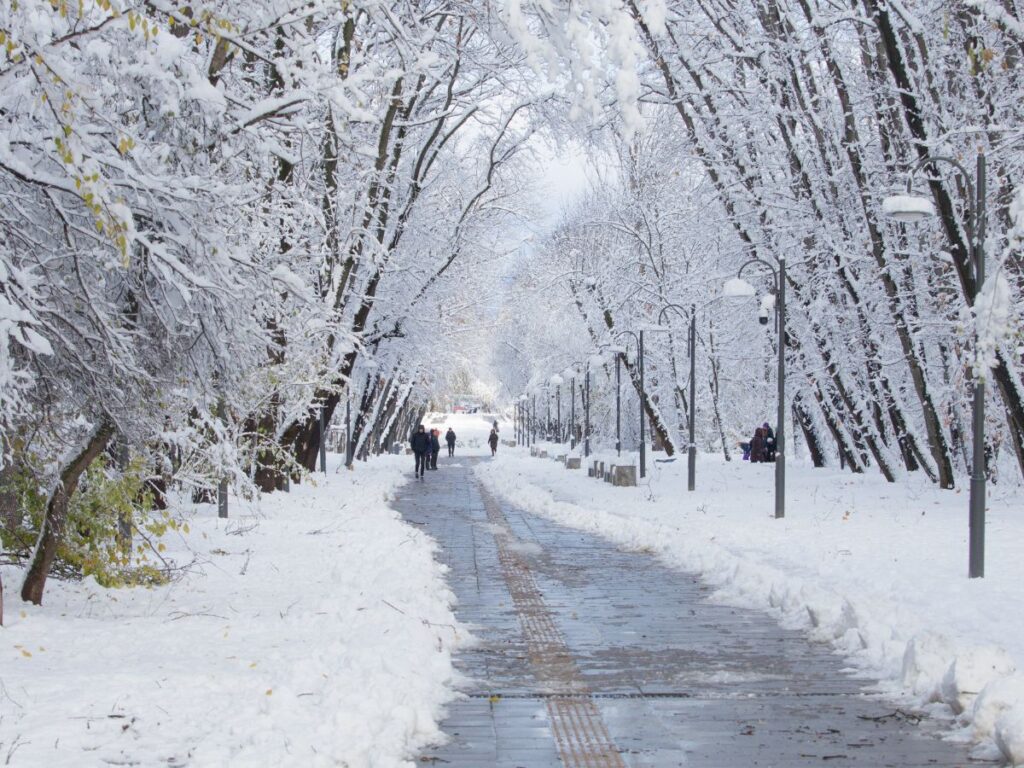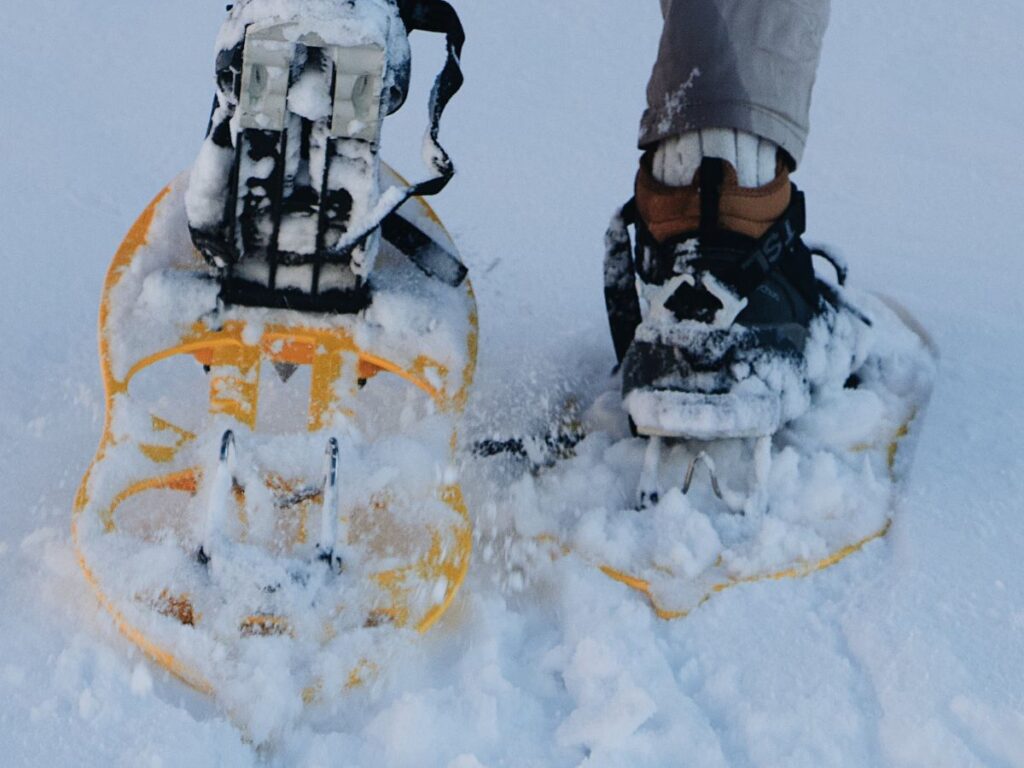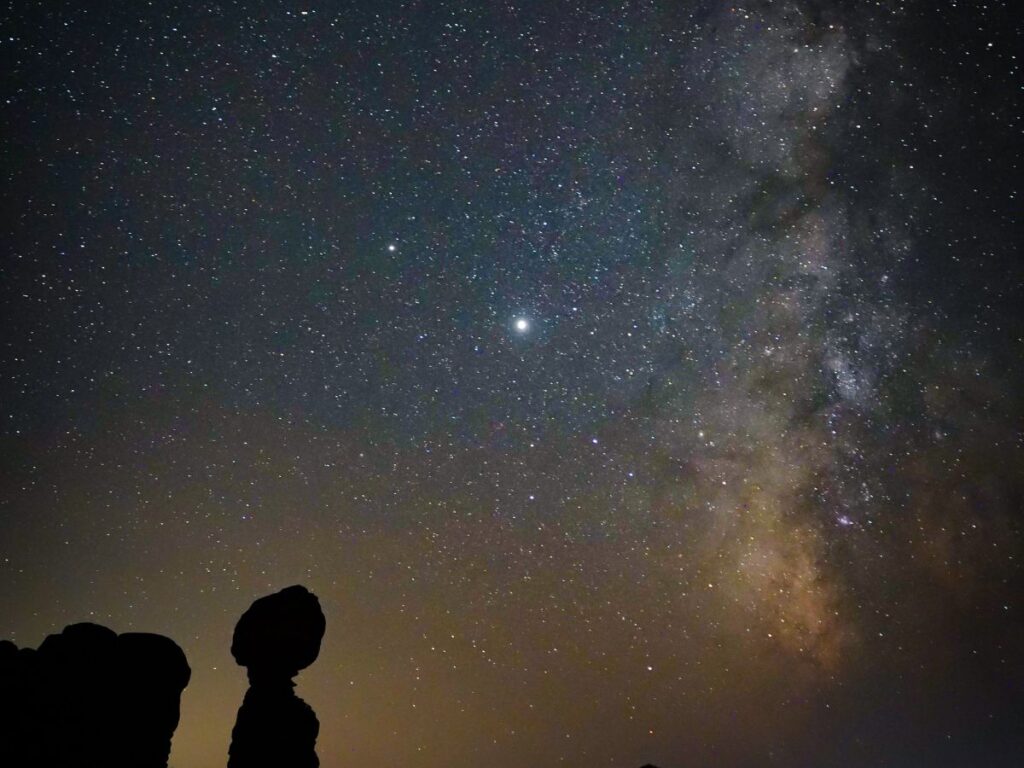Yosemite National Park, a gem nestled in the Sierra Nevada mountains of California, spans nearly 1,200 square miles and is heralded for its captivating granite cliffs, verdant meadows, ancient giant sequoias, and vast wilderness areas. Established in 1890, the park is a UNESCO World Heritage site and attracts millions of visitors every year from around the globe.
Planning a trip to Yosemite, or any national park for that matter, isn’t just about knowing the best spots to visit or trails to hike. It also requires understanding the local weather conditions. Weather in Yosemite can be quite variable, with each season offering a distinct experience. It can influence everything – from what you pack to the activities you can partake in, and even safety considerations during your visit. Being well-informed about Yosemite’s weather patterns is not just beneficial; it’s crucial for a fulfilling and safe adventure in this majestic wilderness.
Seasonal Weather Overview
Yosemite National Park boasts a diverse range of climates, primarily due to its varied elevations and geographical location. The park’s weather can be segmented into four distinct seasons, each bringing its unique flavor and beauty. To make the most out of your trip, it’s essential to familiarize yourself with the climatic nuances of each season.
Spring
Spring in Yosemite is a time of renewal. As the snow starts to melt, waterfalls begin to roar, and wildflowers start to bloom, adding vibrant hues to the landscape.
- Average Temperatures: Spring temperatures can be quite variable, ranging from lows of 30°F (-1°C) in early spring to highs of 70°F (21°C) by late spring. The valley floor typically remains cool, with average temperatures between 40°F (4°C) and 60°F (15°C).
- Precipitation Levels: Rainfall is more frequent in early spring, gradually tapering off as the season progresses. While lower elevations like the Yosemite Valley see rain, higher elevations can still experience snowfall.
- Wind Speed: Spring winds are generally moderate, with average speeds of 5-15 mph. However, gusty conditions can be expected, especially in exposed areas or during stormy days.

Summer
Summer sees the park bustling with activity. As the snow completely recedes from most areas, hiking trails open up, and campgrounds are abuzz with campfires and laughter.
- Average Temperatures: Summers are warm, especially on the valley floor. Daytime temperatures can soar to 80°F-100°F (27°C-37°C) in the valley. However, the higher elevations remain cooler, with average daytime temperatures ranging from 50°F to 75°F (10°C to 24°C).
- Precipitation Levels: Summer is relatively dry. While afternoon thunderstorms can occur, they are usually short-lived. The possibility of rain remains low, but it’s always good to be prepared for unexpected showers.
- Wind Speed: Wind speeds during the summer months average between 5-10 mph. However, like spring, gusty conditions can prevail, especially during and after thunderstorms.
Fall
Fall in Yosemite is a transitional season, where the park’s landscapes begin to morph, displaying vibrant autumn hues, especially in the Yosemite Valley.
- Average Temperatures: Fall temperatures gradually drop, beginning with mild days in the 70s°F (21-26°C) in early fall and dipping to highs of 50s°F (10-15°C) by late November. Overnight lows can drop to freezing in late fall, especially at higher elevations.
- Precipitation Levels: While early fall remains relatively dry, the chances of rain and even snow increase as the season advances. October and November might see the first significant snowfalls, especially in the higher reaches of the park.
- Wind Speed: Fall sees a mix of calm and breezy days. Average wind speeds typically hover around 5-10 mph, but gusty conditions can arise, particularly ahead of storms.
Winter
Winter transforms Yosemite into a snowy wonderland. Many parts of the park become inaccessible due to snow, but the beauty this season brings is unparalleled.
- Average Temperatures: Winter is cold, especially at higher elevations. Valley temperatures range from highs of 30s to 50s°F (0-10°C) and lows often dipping below freezing. Higher elevations can experience substantially colder conditions, with temperatures often staying below freezing throughout the day.
- Precipitation Levels: Winter is the wettest season for Yosemite. The park can receive significant snowfall, especially in the high country, with some areas accumulating several feet of snow. Lower elevations, like Yosemite Valley, see a mix of rain and snow.
- Wind Speed: Winter winds are relatively calm, averaging around 5 mph, but stronger gusts can occur during stormy conditions, especially in exposed areas.
Yosemite National Park Weather by Month
While seasonal overviews provide a general sense of what to expect in Yosemite National Park, diving deeper into monthly specifics can offer travelers a more detailed perspective. The below list will give you insight on the Yosemite National Park weather by month and presents its unique flavor, greatly influenced by changing weather conditions.
January
January is deep in the heart of winter. Yosemite Valley temperatures range between highs in the 40s°F (4-9°C) and lows often below freezing. The higher elevations experience much colder conditions, with temperatures consistently below freezing. Snowfall is frequent and can be heavy, especially in the higher reaches of the park. The following activities are suggested to be carried out in January:
- Snowshoeing & Cross-Country Skiing: The Badger Pass Ski Area is a hub for these activities, offering routes for all levels.
- Photography: The contrast of snow-covered landscapes against granite cliffs, especially with a misty backdrop, can be ethereal.
- Valley Floor Walks: Exploring the valley floor with fewer crowds offers a serene experience, with iconic spots like El Capitan and Yosemite Falls surrounded by snow.

February
February weather in Yosemite National Park continues the winter’s cold grasp, with temperatures in the Yosemite Valley ranging from highs in the 40s to 50s°F (4-10°C) and lows hovering around or below freezing. Higher elevations stay cold, often below freezing, and further snow accumulation is typical. The following activities are suggested to be carried out in February:
- Horsetail Fall Viewing: On clear days in mid-to-late February, the setting sun illuminates the Horsetail Fall, making it appear as if it’s on fire—a phenomenon known as the “Firefall.” It’s a must-see for photographers and nature enthusiasts.
- Ice Skating: The Curry Village Ice Rink offers a delightful ice-skating experience with a view of the iconic Half Dome.
- Winter Hiking: With the right gear, trails like the Lower Yosemite Fall Trail can be explored, revealing a unique winter beauty.
March
Yosemite National Park weather in March is the cusp between winter and spring in Yosemite. Snow remains prevalent, especially in higher terrains, but the Valley might start to see rain intermixed with snow. Yosemite National Park March weather can range from highs in the 50s°F (10-15°C) to lows slightly above or below freezing. Higher elevations, while warming slightly, still predominantly experience below-freezing temperatures. The following activities are suggested to be carried out in March:
- Waterfall Viewing: As the snow begins to melt, waterfalls throughout the park, including the iconic Yosemite Falls, start to roar back to life.
- Spring Skiing and Snowboarding: Depending on snow conditions, Badger Pass Ski Area might still be operational, offering springtime snow sports.
- Bird Watching: As spring approaches, many migratory birds begin returning to the park.
April
You can witness a more noticeable shift towards spring in Yosemite National Park weather in April. The snow melt accelerates, leading to powerful waterfalls and rapid stream flows. While the risk of snow decreases in the valley, higher elevations can still experience snow showers. Weather in Yosemite National Park during this month often sees the temperatures highs in the 60s°F (15-20°C) with lows in the 30s°F (0-5°C). The following activities are suggested to be carried out in April:
- Wildflower Viewing: Meadows in the lower elevations of Yosemite start to bloom with wildflowers, offering a colorful spectacle.
- Hiking: Lower elevation trails, such as the Bridalveil Fall Trail and Mirror Lake Trail, become more accessible.
- Rock Climbing: Climbers start to flock to Yosemite, especially the Valley, to take advantage of the improving conditions and tackle famous routes.
May
Yosemite National Park’s weather in May is when spring truly blossoms in Yosemite. In the Yosemite Valley, temperatures often hover between highs in the 70s°F (21-26°C) and lows in the 40s°F (4-9°C). Higher elevations experience a broader range with snow still present in many places. The month is characterized by melting snow from the mountains feeding the streams and rivers, leading to spectacular waterfalls. The following activities are suggested to be carried out in May:
- Waterfall Chasing: Yosemite National Park weather in May is arguably the best time to experience Yosemite’s waterfalls in their full glory. The likes of Yosemite Falls, Bridalveil Fall, and Vernal and Nevada Falls are at peak flow.
- Cycling: Rent a bike and explore the scenic routes in the valley floor.
- Camping: Campgrounds, especially in the valley, start to fill up, providing nature enthusiasts an opportunity to sleep under the stars.

June
June weather in Yosemite National Park marks the onset of summer in Yosemite. The Yosemite Valley witnesses temperatures ranging from highs in the 80s to 90s°F (27-34°C) and lows in the 50s°F (10-15°C). However, high-elevation areas like Tuolumne Meadows can still have patches of snow. The month is generally drier compared to May, but afternoon thunderstorms are not uncommon. The following activities are suggested to be carried out in June:
- High-Elevation Hiking: With the snow melting, trails in higher elevations, such as those in the Tuolumne Meadows area, start to become accessible.
- Stargazing: Clear summer nights provide an excellent opportunity for stargazing, especially during the new moon phase.
- Rock Climbing: The warmer and drier conditions make it ideal for tackling more climbing routes, including those on the famous El Capitan.
July
July in Yosemite signifies the heart of summer. Yosemite Valley typically experiences highs in the 90s°F (32-37°C) and occasionally even surpasses 100°F (37.8°C). The nighttime lows tend to stay in the 50s°F (10-15°C). Higher elevations, such as the Tuolumne Meadows, enjoy more moderate temperatures. While July is one of the drier months, brief afternoon thunderstorms can occur, especially in higher elevations. The following activities are suggested to be carried out in July:
- Backpacking: Many of the park’s longer trails, including segments of the Pacific Crest Trail and John Muir Trail, are in prime condition for multi-day hikes.
- Photography: Capture the beauty of the park during the golden hour, with meadows in full bloom and granite peaks glowing.
- Swimming: Cool off in the Merced River, but always be aware of currents and water temperatures.
August
August continues the summer warmth, with Yosemite Valley temperatures often in the upper 80s to 90s°F (31-34°C). Nighttime brings relief with lows in the 50s°F (10-15°C). Like July, higher elevations are cooler and can experience those occasional afternoon thunderstorms. The following activities are suggested to be carried out in August:
- Mountain Climbing: For the more adventurous, tackle some of the park’s iconic peaks, like Clouds Rest or Cathedral Peak.
- Rafting: Rent a raft and float down the Merced River through the Yosemite Valley. Ensure to stick to designated areas and always wear a life jacket.
- Nature Workshops: Participate in ranger-led programs or workshops that delve deeper into Yosemite’s rich biodiversity and geology.
September
September weather in Yosemite National Park marks the transition from summer to fall in Yosemite. The Yosemite Valley sees daytime highs ranging from the upper 70s to 80s°F (25-29°C) with nighttime lows dipping into the 40s and 50s°F (4-15°C). As the month progresses, temperatures gradually decrease, especially in the higher elevations. The month remains relatively dry, but the occasional rain shower is not out of the question. The following activities are suggested to be carried out in September:
- Leaf Peeping: While Yosemite is not always first thought of for fall colors, certain areas, especially around the dogwoods and oaks, begin to showcase autumn hues.
- Wildlife Watching: As animals prepare for the winter, September can be a good month to spot wildlife like deer and black bears.
- Hiking: The moderate temperatures make it ideal for exploring both valley and high country trails.

October
In October, fall is in full swing. Yosemite Valley typically experiences highs in the 60s to 70s°F (15-24°C) and lows in the 30s to 40s°F (0-9°C). The first snowfalls of the season can occur in the higher elevations, signaling the approach of winter. While October can have several clear, crisp days, rain and even snow showers become increasingly possible as the month progresses. The following activities are suggested to be carried out in October:
- Stargazing: With fewer visitors and clearer skies early in the month, it’s a great time for stargazing.
- Camping: Enjoy the serenity of the park without the peak season crowds. However, always be prepared for colder nights.
- Photography: The contrast of autumn colors against the granite cliffs and clearer atmospheric conditions can make for spectacular photography opportunities.
November
Yosemite National Park November weather is undeniably autumnal, with winter’s touch appearing in the latter half. Yosemite Valley temperatures generally see daytime highs in the 50s°F (10-15°C) and nighttime lows approaching or dipping below freezing. You can experience higher elevations and more drastic temperature drops. It’s not uncommon for snowfalls to occur in Yosemite National Park weather in November. Precipitation increases in frequency compared to October, so visitors should anticipate rain and possibly snow. The following activities are suggested to be carried out in November:
- Late Fall Hikes: Before snow completely covers trails, seize the opportunity for cooler-temperature hikes, particularly in the valley.
- Photography: With potential early snowfalls, the contrast of snow on the colorful fall foliage can provide breathtaking photographic opportunities.
- Indoor Workshops: Take advantage of indoor ranger-led programs or explore the Yosemite Valley Visitor Center to gain a deeper understanding of the park’s history and ecology.
December
Weather in Yosemite National Park in December is one of the best times to visit the park. Visitors can expect daytime highs in the 40s°F (4-9°C) with nighttime lows frequently below freezing In Yosemite Valley. Snow is a frequent guest in December, particularly in higher elevations but can blanket the valley as well. Road closures due to snow are common, especially the Tioga and Glacier Point roads. You must check the weather forecast in Yosemite national park during this season to avoid difficulty during your visit. The following activities are suggested to be carried out in December:
- Snow Sports: As snow accumulates, areas like Badger Pass Ski Area become hubs for cross-country skiing, snowboarding, and snowshoeing.
- Winter Wildlife Watching: Look for tracks in the snow, or catch glimpses of animals like bobcats or coyotes against the snowy backdrop.
- Holiday Celebrations: Participate in any special holiday events or workshops the park might offer, and enjoy the festive atmosphere amid the natural beauty of Yosemite.
Yosemite National Park Weather Conditions
Yosemite National Park’s grandeur and beauty also come with a gamut of extreme weather conditions. Visitors should be informed and prepared about to ensure their safety and comfort about the extreme Yosemite National Park weather conditions.
High Winds: The park can experience high wind events, especially in exposed alpine regions and during certain seasons. Strong gusts can make hiking challenging, topple trees, and create unsafe driving conditions.
Snowstorms: In the winter at Yosemite National Park weather, especially from December through February, heavy snowstorms can blanket the park. These snow events can lead to road closures, especially the Tioga and Glacier Point roads, and can pose avalanche risks in certain areas.
Heatwaves: The summer months, particularly July and August, can see intense heat, especially in the lower elevations like Yosemite Valley. Temperatures can soar beyond 90°F (32°C), making dehydration and heat-related illnesses a concern.
Flash Floods: Occurring mainly during the summer months, sudden heavy rainfall can lead to flash floods, especially in canyon areas. These can be extremely dangerous and can change the landscape quickly, blocking trails and roads.

What to Pack
Being prepared with the right gear can make a trip to Yosemite more enjoyable and safe, especially given the range of Yosemite National Park weather conditions the park can present.
Packing Tips Based on Season
- Spring: Waterproof boots, rain gear, layers for variable temperatures.
- Summer: Lightweight clothing, sun hat, sunscreen, plenty of water storage.
- Fall: Warm layers, a hat and gloves, and a waterproof jacket.
- Winter: Insulated and waterproof clothing, snow boots, hats, gloves, and scarves.
Special Equipment for Extreme Weather Conditions
- High Winds: Secure tent stakes if camping, wind-resistant gear, and eyewear.
- Snowstorms: Snowshoes, crampons, avalanche safety gear if venturing into backcountry areas, and a snow shovel if driving.
- Heatwaves: Extra water storage, cooling towels, and a portable fan.
- Flash Floods: Always check the weather forecast before heading out, and avoid canyons or low-lying areas if rain is predicted. Consider carrying a satellite communication device if you’ll be in remote areas.
Key Takeaways
- The park boasts a wide range of weather conditions throughout the year, from snowstorms in winter to heatwaves in summer.
- Visitors should be aware of potential high winds, snowstorms, intense heat waves, and flash floods, depending on the season and region within the park.
- Depending on when you visit, appropriate packing can enhance your experience. For example, waterproof gear in spring, lightweight clothing in summer, warm layers in fall, and insulated clothing in winter.
- During extreme weather events, special equipment like snowshoes during heavy snow, extra water storage during heatwaves, or secure tent stakes during high winds can be crucial.
- Always monitor current weather forecasts and park alerts. Be particularly cautious of flash floods if rain is forecasted, especially in canyons and low-lying areas.
- Rapid weather changes are common, so packing versatile gear and clothing layers can help you adjust to varying conditions.
- Checking the latest reports, understanding the park’s diverse climate, and packing appropriately ensures a safer and more enjoyable visit to Yosemite National Park.
- Always check the Yosemite National Park weather forecast before planning.
FAQs
- Is it safe to hike during the summer months?
Summer hiking is popular, but always carry water, wear sunscreen, and be cautious of afternoon thunderstorms.
- How hot does it get during Yosemite’s heatwaves?
Summer heatwaves can see temperatures rising above 90°F (32°C) in the valley.
- How does spring’s precipitation affect the park?
Spring rains and melting snow lead to gushing waterfalls, making it a popular time for viewing.
- Are there places in Yosemite that remain cool during heatwaves?
Higher elevations, like Tuolumne Meadows, tend to remain cooler than the valley during heatwaves.
- When are Yosemite’s waterfalls at their peak flow?
They’re typically at their most robust in spring with snowmelt and rain.
- Is winter a good time for photography in Yosemite?
Yes, winter offers picturesque snow-covered landscapes, especially after fresh snowfalls.
- What special gear might I need during extreme weather conditions?
Depending on conditions: snowshoes for heavy snow, extra water storage for heatwaves, and waterproof gear for rain.
- What is the weather in Yosemite National park?
Weather at Yosemite National Park has snowy winters and warm summers in the valley, with cooler temperatures at higher elevations.
